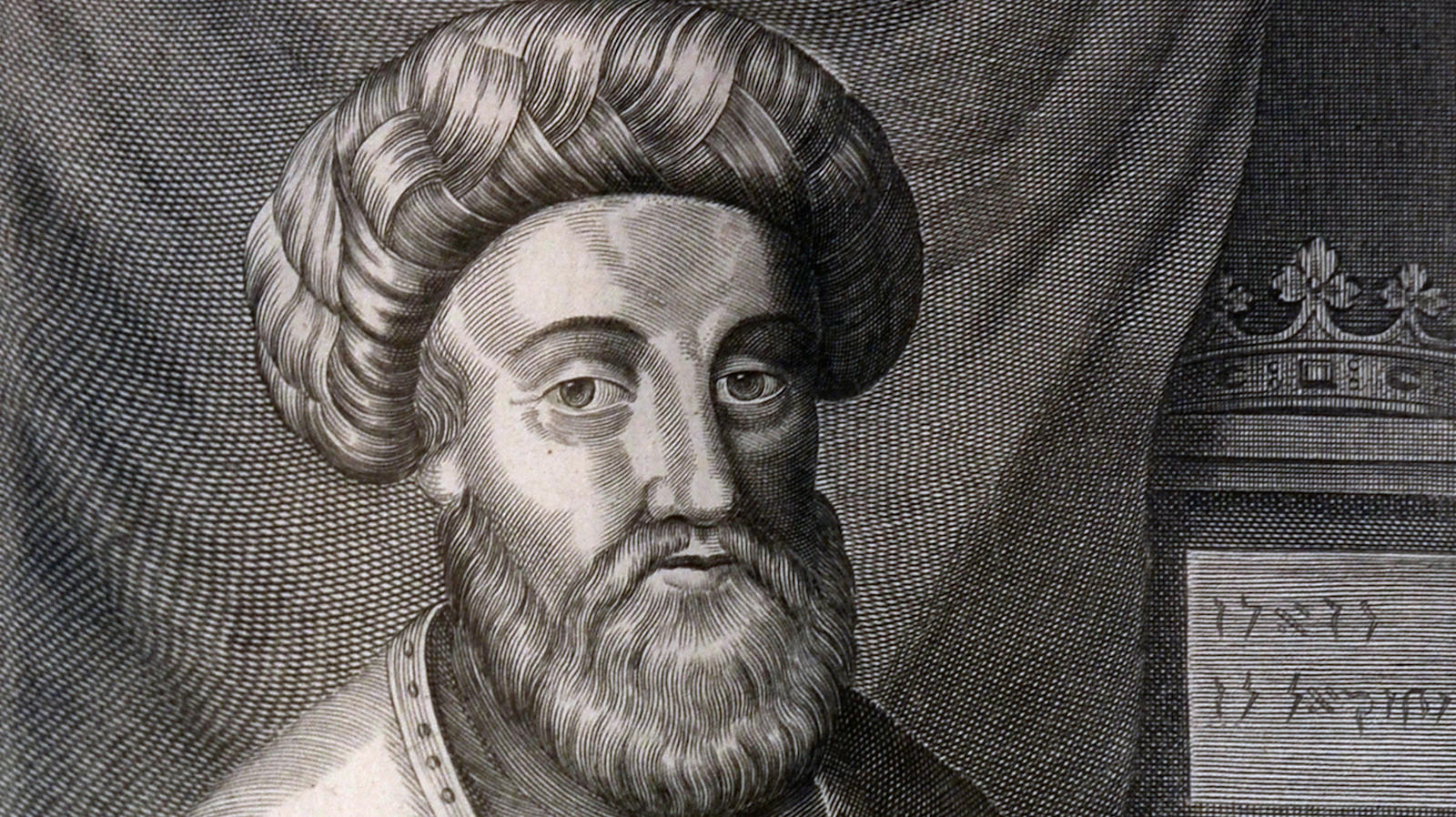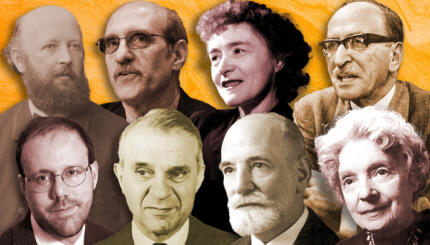While faith in the coming of the messiah is a linchpin of Judaism, Jews have traditionally taken a patient, quietistic approach to their messianic beliefs. Since the devastation wreaked by false messiah Bar Kochba and his rebellion against the Romans, and the centuries of persecution caused by another messianic movement — Christianity — Jews have been understandably suspicious about anyone’s claim to be God’s anointed.
The rabbis of the Talmud went so far as to introduce specific prohibitions against messianic agitation, instituting the “three oaths” which prohibited any attempt to “force the end” by bringing the messiah before his allotted time (Babylonian Talmud, Ketubot 111a). Yet in the mid-17th century, belief in the false messiah Shabbetai Zevi (often spelled Tzvi) spread like wildfire throughout the Jewish world, sweeping up entire communities and creating a crisis of faith unprecedented in Jewish history.
Shabbetai Zevi was said to be born on the 9th of Av in 1626, to a wealthy family of merchants in Smyrna (now Izmir, Turkey). He received a thorough Talmudic education and, still in his teens, was ordained as a hakham — a member of the rabbinic elite. However, Shabbetai Zevi was interested less in Talmud than in Jewish mysticism. Starting in his late teens he studied kabbalah, attracting a group of followers whom he initiated into the secrets of the mystical tradition.
Shabbetai Zevi battled with what might now be diagnosed as severe bipolar disorder. He understood his condition in religious terms, experiencing his manic phases as moments of “illumination” and his times of depression as periods of “fall,” when God’s face was hidden from him. While at times of depression he became a semi-recluse, when “illuminated” he felt compelled to contravene Jewish law, perform bizarre rituals (ma’asim zari or strange acts), and publicly pronounce the proscribed name of God.
In 1648, Shabbetai Zevi declared himself to be the messiah but did not make much of an impression on the Smyrna community which had become accustomed to his eccentricities. Nonetheless, the rabbis banished him from his hometown, and he spent much of the 1650s traveling through Greece and Turkey. He was eventually expelled from the Jewish communities in Salonika and Constantinople (now Istanbul) for violating the commandments and performing blasphemous acts. In the 1660s he arrived in Egypt via Israel. During this period he led a quiet life, displaying no messianic pretensions. The turning point in his messianic career came in 1665 as the result of a meeting with his self-appointed prophet, Nathan of Gaza.
Nathan the Prophet and Zevi the Messiah
Nathan was a man of great intellectual stature, a kabbalist and an ascetic, who Shabbetai Zevi approached for a mystical remedy to his spiritual malaise. Nathan tried to convince Shabbetai of his messianic identity — having had this secret revealed to him in a vision — and during Shavuot 1665, publicly announced the appearance of the messiah. During his next period of “illumination,” Shabbetai Zevi consented to these claims and initiated his own messianic career. Most rabbis opposed him but, aside from issuing writs of excommunication and banishing him from Jerusalem, took no action against him.
Nathan, however, initiated a mass movement of repentance, fasting and ascetic acts to prepare the way for the coming redemption. In September 1665, he announced that a fundamental cosmic shift had taken place and that within the year, without war, Shabbetai Zevi would take the Turkish sultan’s crown and make the sultan his servant. After that Zevi would bring back the lost tribes of Israel and marry Rebecca, the daughter of a resurrected Moses. The sultan would then rebel and the ensuing war would usher in the tumultuous birth pangs of the messiah.
In the same month, Shabbetai Tzvi traveled to Aleppo and Smyrna amidst an atmosphere of religious agitation; several sightings of Elijah were reported. Rabbis and communal leaders were swept up in the excitement. When Shabbetai Tzvi reverted to a state of ecstasy and began performing ma’asim zarim, the rabbis tried to stop him, but it was too late. With his followers, he stormed the synagogue of his opponents, called up family members and friends — including women — to the reading of the Torah, and had them pronounce the divine name in their blessings. Comparing his rabbinical opponents to unclean animals, he declared himself the anointed one of God.
Embracing the “Messiah”
Messianic fervor began to spread throughout the communities of the Diaspora. Repentance, extreme asceticism, scourging, and fasting alternated with periods of ecstatic joy. Messianic prayers written by Nathan of Gaza were published. While some Jews began to make travel plans for their imminent departure to the Land of Israel, others refused, believing that they would miraculously be transported there on clouds.
What made the Jewish world so receptive to the false messianism of Shabbetai Zevi? In 1648-49, Cossack bands led by Bogdan Chmielnicki massacred 300,000 Jews in Ukraine amid unprecedented acts of cruelty. Many communities that escaped were then devastated in the Russian-Swedish war of 1655. In this context, the Jewish people’s historical dream of redemption from the bondage of exile took on a new degree of urgency and desperation. In these communities, Shabbetai Tzvi found a receptive audience.
But Shabbateanism influenced communities all over the Jewish world, many of whom were unaffected by Chmielnicki and had no significant history of persecution. Here, the movement’s popularity must be understood in its theological context. The 16th century had seen the development of a popular new religious movement, emanating from the town of Safed in northern Israel: Lurianic Kabbalah. The new doctrine held that the creation of the world had sent the presence of God into exile, shattering the divine light into countless sparks, and concealing them within the shells of mundane reality. By uncovering and raising up these sparks through mystical prayer and ritual, the redemption — not only of the Jewish people but of the cosmos and of God himself — could be achieved. Whereas previously Kabbalah had been speculative and esoteric, it was now a popular movement, shot through with messianic tension. The appearance of a messiah who, by contravening Jewish law, could descend into the depths of sin to redeem the last of the sparks, invigorated the Jewish people with the sense that the end of the exile was at hand.
If Shabbetai Zevi’s initial reception was conditioned by these religious factors, once inaugurated, the movement took on a momentum of its own. Around the Jewish world, a divide emerged between believers and their opponents. In many communities the anti-Shabbatean minority, including many rabbis , were careful not to antagonize their congregations for fear of terror and reprisals. Thus any effective opposition was neutralized.
Zevi’s Conversion to Islam
In 1666 Shabbetai Tzvi was arrested in Constantinople. After a period of imprisonment — during which he held court as messiah, replaced the fast of the 9th of Av (Tisha B’Av) with a festival celebrating his birthday and began to sign his letters “I am the Lord your God Shabbetai Tzvi” — he was denounced for fomenting sedition and brought before the sultan. Now in a depressive state, he denied ever having made messianic claims. Offered the choice of apostasy or death, he chose to convert to Islam. Shabbetai Tzvi became Aziz Mehmed Effendi, and, with a royal pension, lived until 1676, outwardly a Muslim but secretly participating in Jewish ritual. His letters reveal that at the time of his death, he still believed in his messianic mission.
While Shabbetai Zevi’s conversion created a crisis of faith for most of his followers, the movement lived on, sustained by esoteric kabbalistic explanations for the apostasy and by its adherents’ psychological need to prevent their deep-seated religious world view from falling apart. The movement survived into the early 18th century, when the Shabbateans divided into two camps: moderates who combined their secret messianic faith with adherence to Jewish law and radicals who set about covertly spreading the heretical doctrine that the “nullification of the Torah was its true fulfillment.” This radical wing of the Shabbatean movement achieved a short-lived revival under Jacob Frank, a Polish Jew who, in 1756, was heralded as the reincarnation of Shabbetai Zevi.
Shabbetai Zevi’s Long-Term Impact
Shabbateanism subsequently died out as a significant feature of Jewish life, but its long-term impact was far-reaching. Its most immediate influence was in the formulation of a new version of Jewish mysticism — the Hasidic movement, born in late 18th-century Poland. The quietistic, inwardly spiritual tone of early Hasidism was a conscious reaction against the messianic excesses of the Shabbeteans, while the Hasidic Jews’ unconditional faith in their rebbe or tzaddik had as its precedent the dynamic between Shabbetai Zevi and his followers. In the late 20th century, the resurgence of messianic fervor among some Chabad-Lubavitch Hasidic Jews lent credence to this relationship. Historian Haim Hillel Ben-Sasson took this idea one step further, arguing that the whirlwind of popularity and enthusiasm generated by a secular Zionist like Theodor Herzl at the end of the 19th century cannot be understood without reference to the Shabbaetean movement.
Gershom Scholem, the seminal historian of Jewish mysticism, makes an even bolder claim. He argues that the split between outward orthodoxy and secret heresy, which characterized Shabbetai Zevi’s followers, destroyed the unity of their Jewish identity from within. This, combined with the trauma caused by the false messiah’s apostasy, was one of the decisive factors that explain the disintegration of traditional Judaism and the onset of modern Jewish history.
Hasidic
Pronounced: khah-SID-ik, Origin: Hebrew, a stream within ultra-Orthodox Judaism that grew out of an 18th-century mystical revival movement.
Shavuot
Pronounced: shah-voo-OTE (oo as in boot), also shah-VOO-us, Origin: Hebrew, the holiday celebrating the giving of the Torah at Mount Sinai, falls in the Hebrew month Sivan, which usually coincides with May or June.
Talmud
Pronounced: TALL-mud, Origin: Hebrew, the set of teachings and commentaries on the Torah that form the basis for Jewish law. Comprised of the Mishnah and the Gemara, it contains the opinions of thousands of rabbis from different periods in Jewish history.
Torah
Pronunced: TORE-uh, Origin: Hebrew, the Five Books of Moses.
Kabbalah
Pronounced: kah-bah-LAH, sometimes kuh-BAHL-uh, Origin: Hebrew, Jewish mysticism.



